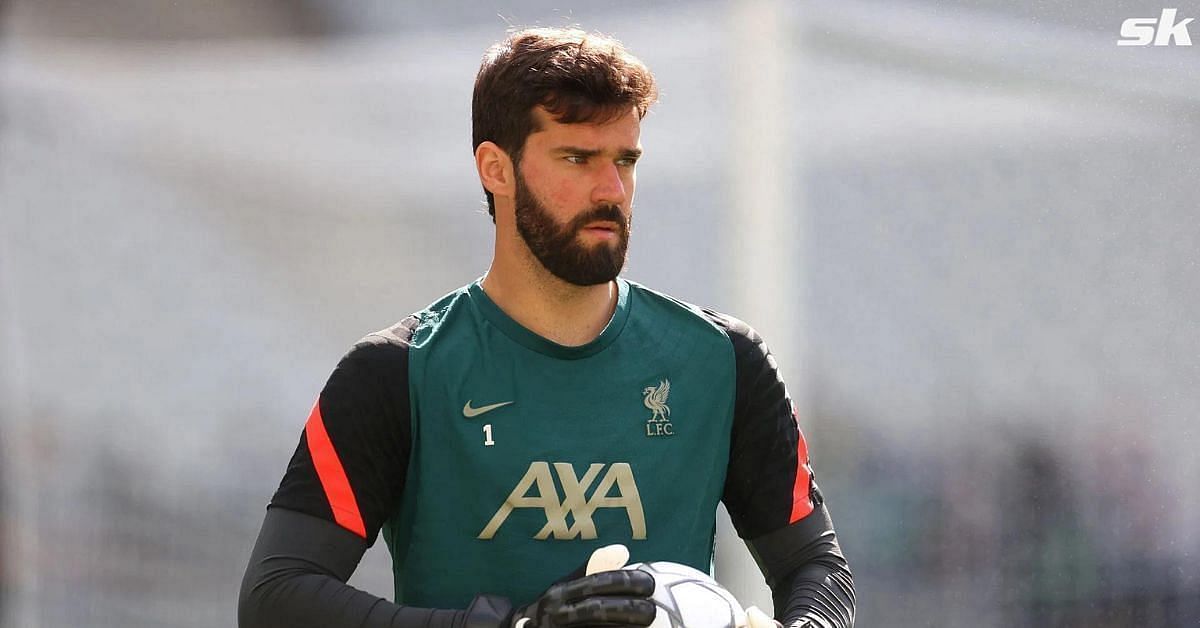
Okay, here’s a comprehensive article on football transfer release clauses, aiming for around 1200 words.
The Unlocking Mechanism: A Comprehensive Guide to Football’s Transfer Release Clauses
In the high-stakes, high-drama world of professional football, few topics generate as much intrigue and speculation as player transfers. Beyond the headline-grabbing fees and the last-minute dashes to the fax machine, lies a crucial, often misunderstood, element: the release clause. These contractual provisions, sometimes lauded as a player’s liberation and other times cursed as a club’s vulnerability, are integral to the modern transfer market.
This guide will delve deep into the mechanics, regional variations, strategic implications, and the future of release clauses, shedding light on why they are far more than just a number.
What is a Release Clause?
At its most fundamental, a release clause, also known as a buyout clause or a minimum fee release clause (MFRC), is a pre-agreed sum of money stipulated in a player’s contract. If another club offers to pay this exact amount, the player’s current club is legally obligated to accept the bid and allow the player to negotiate personal terms with the interested party. Essentially, it acts as an "unlocking mechanism," bypassing lengthy negotiations and giving the player a predetermined exit route.
Crucially, the decision to activate the clause rests with the player and the buying club. The selling club, having agreed to the clause when the contract was signed, loses its right to refuse the transfer if the clause is met. This makes release clauses distinct from other contractual stipulations like performance bonuses, relegation clauses, or gentlemen’s agreements, which are not legally binding in the same way or do not automatically trigger a transfer.
The Legal Landscape: Regional Differences
The prevalence and legal enforceability of release clauses vary significantly across Europe’s major football leagues, largely influenced by each country’s labour laws and footballing culture.
Spain (La Liga): The Mandatory Standard
Spain stands unique among Europe’s top leagues due to its specific labour laws. Article 16 of the Royal Decree 1006/1985, which regulates the special labour relationship of professional athletes, effectively mandates the inclusion of a release clause in every professional footballer’s contract. This is a crucial distinction: clubs must include one.
The rationale behind this law is rooted in protecting the player’s freedom of movement and preventing them from being indefinitely tied to a club against their will. If a player wishes to terminate their contract unilaterally, they must compensate the club for the remaining value of their contract. The release clause pre-agrees this compensation amount.
This legal framework means that Spanish clubs, while they can set the clause extremely high (as seen with Lionel Messi’s €700 million clause or Antoine Griezmann’s €800 million clause at Barcelona), cannot prevent a player from leaving if the clause is met. The most famous example is Neymar’s €222 million move from Barcelona to Paris Saint-Germain in 2017. PSG simply deposited the clause amount with La Liga, triggering the transfer. This transaction sent shockwaves through the football world, demonstrating the absolute power of these clauses in Spain.
Germany (Bundesliga): Common but Optional
In Germany, release clauses are common but not mandatory. Clubs and players can choose whether or not to include one in a contract. When they are included, the exact figures are often kept secret, known only to the player, their agent, and the clubs involved.
Bundesliga clubs often use release clauses strategically to attract top talent, especially younger players, by offering them a clear path to a bigger club in the future if they perform well. Robert Lewandowski’s relatively low €25 million clause at Borussia Dortmund before his move to Bayern Munich, or Erling Haaland’s reported €60 million clause that facilitated his move from Dortmund to Manchester City, are prime examples. For clubs like Dortmund, including a clause can secure a player’s services for a few years, allowing them to develop and perform, with the understanding that a significant, pre-agreed profit will be made upon their eventual departure.
Italy (Serie A): Strategic and Selective
Release clauses in Italy are optional and tend to be used more selectively. They are often inserted into contracts for players joining from abroad, providing them with a potential exit strategy if they don’t settle or if a top European club comes calling. Sometimes, they are also used for players who have committed to a long-term deal but want some assurance about their future valuation.
However, Italian clubs generally prefer not to include release clauses, as they value retaining control over their assets and negotiating transfer fees on a case-by-case basis. When they do exist, they are often structured with conditions, such as only being valid for clubs outside Italy, or only becoming active after a certain number of seasons.
England (Premier League) & France (Ligue 1): Rare and Disliked
In England’s Premier League and France’s Ligue 1, release clauses are exceptionally rare and generally disliked by clubs. There is no legal requirement to include them, and club owners and executives prefer to maintain complete control over their players’ futures. The prevailing philosophy is that if a player is under contract, their transfer fee should be subject to negotiation based on market conditions, the player’s performance, and the remaining length of their contract.
English clubs, in particular, view release clauses as a potential weakness, a way for rival clubs to "poach" their talent without engaging in fair market negotiations. While some players, especially those arriving from leagues where clauses are common (like Spain or Germany), might push for their inclusion, clubs usually resist strongly. When a clause is reported in the Premier League, it often causes a stir, highlighting its unusual nature in that context. Examples like Kepa Arrizabalaga’s reported €80 million clause at Chelsea (stemming from his Athletic Bilbao contract) are exceptions rather than the norm.
The Pros and Cons of Release Clauses
The existence of release clauses introduces a complex dynamic with distinct advantages and disadvantages for all parties involved: players, selling clubs, and buying clubs.
For the Player:
- Pros:
- Control & Exit Strategy: Provides a clear, pre-determined path to leave if a bigger club comes calling or if they wish to seek a new challenge.
- Leverage in Negotiations: Can be used to secure a better contract or to ensure a move if their current club is unwilling to negotiate a sale.
- Guaranteed Move: Eliminates the uncertainty of lengthy transfer sagas once the clause is met.
- Cons:
- Fixed Price: If the clause is set too high, it might deter potential suitors, effectively trapping the player. If it’s too low, it could undervalue them.
- Limited Options: Only clubs willing and able to pay the full clause amount are potential destinations.
For the Selling Club:
- Pros:
- Guaranteed Income: Provides a clear, often substantial, lump sum payment if activated, avoiding protracted negotiations.
- Deterrent: A very high clause can deter interest from rival clubs, securing the player’s services for the contract duration.
- Market Valuation: Can set a benchmark for the player’s value in the market.
- Cons:
- Loss of Control: The club loses all negotiation power once the clause is met, regardless of their desire to keep the player or their strategic needs.
- Potential Undervaluation: If a player’s market value skyrockets beyond their clause, the club is forced to sell them for less than their true worth.
- Disruptive: A sudden activation can disrupt squad planning and leave little time to find a suitable replacement.
- Transparency: In leagues like Spain, the public knowledge of a clause can invite unwanted attention.
For the Buying Club:
- Pros:
- Clear Path: Provides a direct, unambiguous route to acquire a target player without lengthy, uncertain negotiations.
- Avoids Bidding Wars: Once the clause is met, other clubs cannot outbid them on the transfer fee.
- Speed: Transfers can be completed much faster once the clause is paid.
- Cons:
- High Cost: Release clauses are often set at a premium, potentially inflating transfer fees.
- No Negotiation: There’s no room to haggle down the price; it’s an all-or-nothing payment.
- Financial Burden: Paying a large sum upfront can impact a club’s Financial Fair Play (FFP) standing or overall transfer budget.
Strategic Implications and Misconceptions
Release clauses are not merely numbers; they are powerful strategic tools. Clubs use them to ward off suitors, attract players with future ambitions, or secure a significant profit on a rising star. Agents leverage them to ensure their clients have a clear path to career progression.
However, there are common misconceptions:
- Not All Clauses Are Release Clauses: Performance-based clauses (e.g., bonus for winning a trophy), relegation clauses (allowing a player to leave if the club is relegated), or "gentlemen’s agreements" (non-binding verbal promises) are not true release clauses. A genuine release clause mandates the transfer upon payment.
- Secrecy vs. Public Knowledge: While Spanish clauses are generally public, those in Germany or Italy are often confidential, adding another layer of mystery to transfers.
- The "Neymar Effect": While Neymar’s clause was legally activated, its sheer size and the manner of payment (directly by the player’s representatives, facilitated by PSG) dramatically altered perceptions. It demonstrated that even seemingly exorbitant clauses could be met, changing the ceiling for player valuations and transfer fees across Europe.
The Future of Release Clauses
The future of release clauses in football is likely to remain dynamic. In Spain, their mandatory nature will ensure their continued prominence. In other leagues, their use will probably remain selective, driven by strategic considerations.
- Rising Fees: As transfer fees continue to skyrocket, the figures for release clauses will likely follow suit, making them increasingly challenging for all but the wealthiest clubs to activate.
- Player Power: The growing influence of players and their agents might lead to more demands for release clauses, particularly for young talents looking to develop before moving to an elite club.
- Financial Fair Play (FFP): Clubs must balance the immediate financial outlay of activating a clause with their FFP obligations, potentially making them more cautious.
- Negotiation vs. Certainty: Clubs will continue to weigh the desire for negotiation control against the certainty and speed offered by a release clause.
In conclusion, release clauses are a fascinating and fundamental aspect of modern football transfers. Far from being simple contractual footnotes, they represent a complex interplay of legal frameworks, strategic planning, and the ever-shifting balance of power between players, agents, and clubs. They are the silent, often invisible, mechanism that can, at any moment, unlock a blockbuster transfer and reshape the landscape of the beautiful game.



